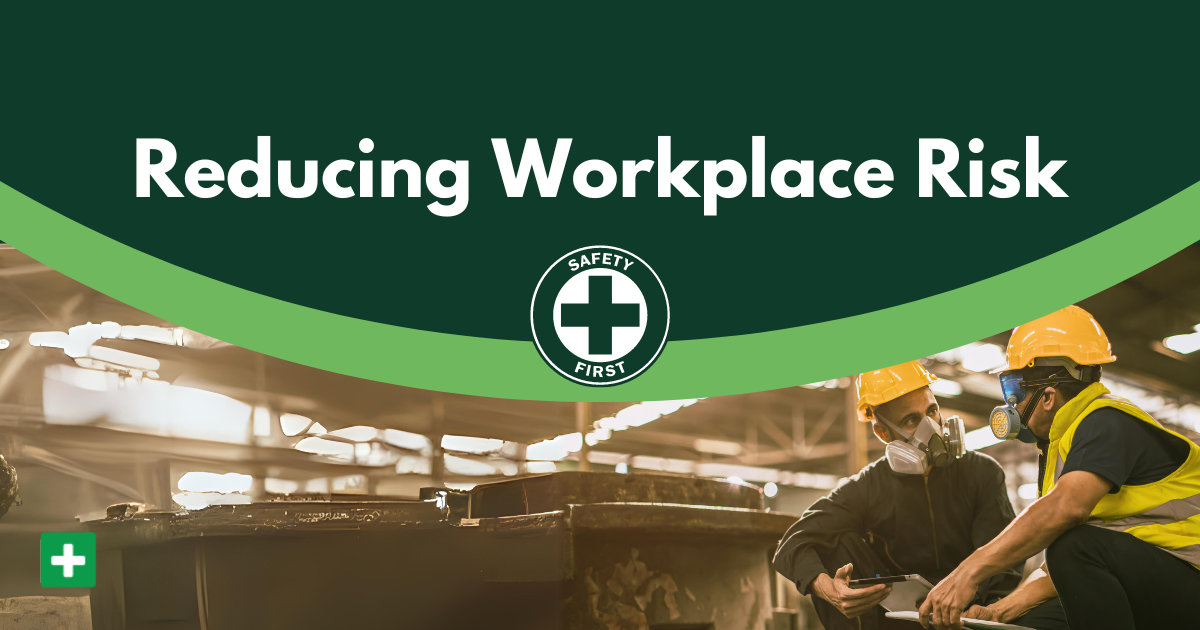Mastering Risk Reduction and Management In The Workplace

Workplace safety is crucial for any industry and any business. For safety managers, reducing risks and managing safety in the workplace is a fundamental responsibility that has impacts on productivity and business success. In this article, we’ll explore effective strategies for mitigating risk, introduce advanced tools like Safety Reports, and discuss continuous improvements in safety management.
The Current State of Workplace Safety
Workplace safety is a significant concern for many businesses, as statistics reveal the alarming frequency and impact of accidents. According to the U.S. Bureau of Labor Statistics, there were 2.8 million nonfatal workplace injuries and illnesses reported in 2022. These health and safety accidents can lead to substantial financial losses, decreased employee morale, and potential legal issues.
Common workplace hazards vary by industry but generally include slips, trips, and falls, machinery malfunctions, hazardous materials, and ergonomic issues. The consequences of these hazards can be severe, resulting in injuries, long-term disabilities, and death. Therefore, reducing these risks is essential for the well-being of employees and the success of the business.
Strategies for Risk Reduction

Importance of Employee Training
One of the most effective strategies for risk reduction is comprehensive employee training. Training employees on safety protocols and best practices ensures that everyone is aware of potential hazards and knows how to respond appropriately. Regular training sessions can cover topics such as emergency procedures, proper equipment use, and handling hazardous materials.
Utilizing Advanced Safety Software
Advanced safety software like Safety Reports can significantly streamline safety management tasks. This software offers features such as data collection, incident reporting, and compliance tracking. By utilizing such tools, safety managers can efficiently monitor safety performance, identify trends, and implement corrective measures promptly.
Implementing Workplace Changes
Making changes in workplace layout and processes can also minimize risks. This might involve rearranging workstations to improve ergonomics, installing safety barriers around hazardous areas, or implementing stricter housekeeping practices. These changes not only reduce the likelihood of accidents but also create a more organized and efficient work environment.
The Role of Safety Reports Software
Safety Reports is a comprehensive safety management software designed to aid risk reduction efforts. Key features include customizable inspection checklists, data analytics, and reporting. These tools allow safety managers to conduct thorough inspections, track compliance, and generate detailed reports to identify areas for improvement.
Developing Effective Training Programs
Developing and maintaining an effective safety training program is crucial for ongoing risk management. Safety managers should design training programs that are specific to their industry and address the unique risks associated with their operations. Regularly updating the training content ensures that it remains relevant and effective.
Regular Safety Meetings
Regular safety meetings are essential for reinforcing safety protocols and encouraging open communication. These meetings provide a platform for employees to voice their concerns, share experiences, and suggest improvements. By fostering a culture of safety, businesses can enhance risk awareness and drive continuous improvement.
Continuous Improvement

Ongoing Risk Assessment
Continuous improvement in risk reduction requires ongoing risk assessment. Safety managers should regularly evaluate workplace conditions, review incident reports, and conduct safety audits. By identifying new hazards and addressing them promptly, businesses can maintain a safe working environment and prevent accidents.
Encouraging Employee Involvement
Employee involvement is key to successful risk management. Encouraging employees to participate in safety committees, report hazards, and contribute ideas for improvement fosters a sense of ownership and accountability. When employees feel valued and heard, they are more likely to adhere to safety protocols and actively contribute to a safer workplace.
Conclusion
In conclusion, effective risk reduction and management are critical for ensuring workplace safety. Safety managers play a vital role in implementing strategies such as employee training, utilizing advanced safety software like Safety Reports, and making necessary workplace changes. Continuous improvement through ongoing risk assessment and employee involvement further enhances safety outcomes.
By prioritizing risk reduction and leveraging tools like Safety Reports, safety managers can create a safer work environment, reduce accidents, and contribute to the overall success of their businesses. Take the first step towards a safer workplace today—explore how Safety Reports can support your risk management efforts and ensure the well-being of your team.


